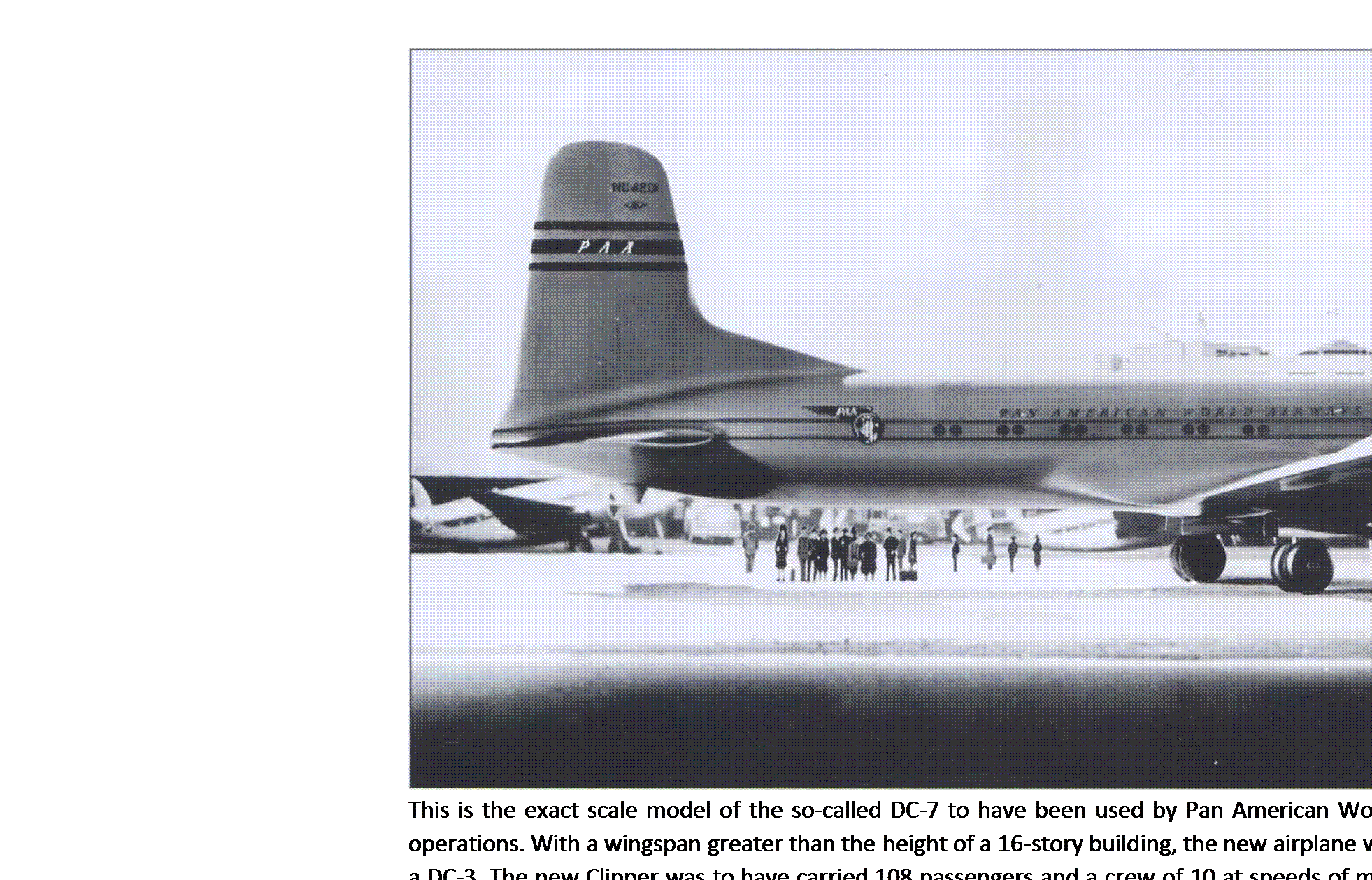Commercial Avation’s Transition to the Jet Age 1952-1962

Original Douglas DC-7 (C-74 for the Air Force)
During the war years, Pan American World Airways was preparing for the day when hostilities would end and it could reclaim its vaunted position as leader of the world’s international air lines. One of the first of its new “Super Clipper” aircraft ideas sprang from the Douglas C-74 Globemaster cargo aircraft being designed as part of the logistics and supply network for the U. S. Army Air Force.
The Globemaster was a large airplane, which suited Pan Am’s style of service quite elegantly. It would carry 108 passengers plus a crew of 13, and could fly nonstop from New York to points in South America, its intended routing. The cabin was to be divided into two sections, one accommodating 36 passengers, and the other 72. An onboard fully powered galley for hot meals was on the list, as were the typically grand dressing rooms and toilets expected on a Pan Am Clipper.
Pan American announced an order for what was to be known as the Douglas DC-7 on October 23, 1944: a commitment for 26 aircraft at a cost of $40 million. This was a staggering amount of money and airplanes in the mid-1940s, but as was typical of the airline and Juan Trippe who ran it, nothing was ever done in a small way at Pan Am.
Unfortunately, although the C-74 was built in one short production run and contributed years of great service with the Air Force, the “DC-7” never made it
into the Pan American fleet owing to the fact that the airline reevaluated its service level requirements. Gigantic and spacious luxury just wasn’t profitable in the postwar climate, and the airline began its landplane service with the Douglas DC-4 and Lockheed Constellation instead.










